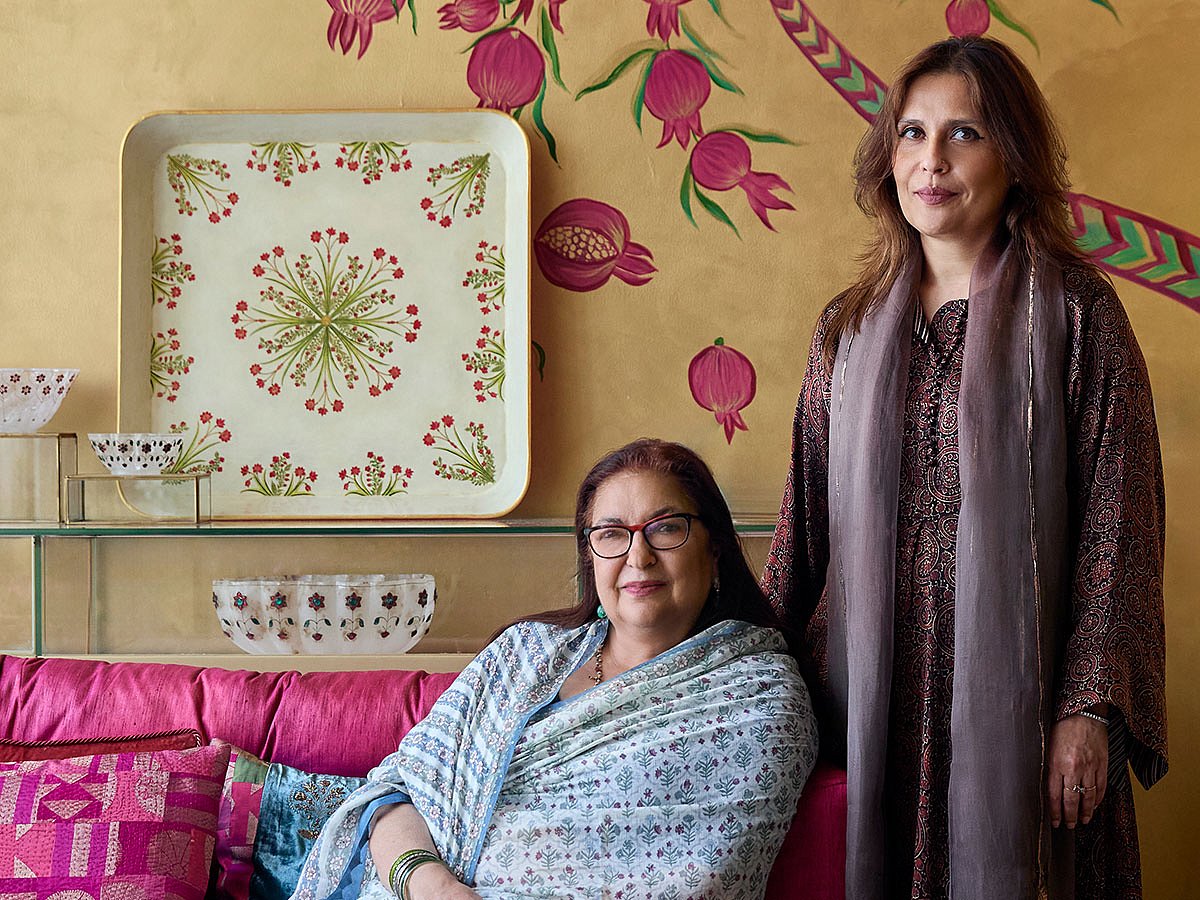Good Earth opens Chahar Bagh in Dubai, bringing Indian craft heritage to global stage
What makes Chahar Bagh particularly intriguing is its refusal to frame craft as nostalgia

Dubai has long perfected the art of architectural overstatement - a kind of futurist bravado rendered in glass and steel. It is, after all, a city that builds islands in the shape of palm fronds and treats retail as a form of civic theatre. Into this landscape enters Good Earth’s Chahar Bagh, not as a competitor in Dubai’s ongoing pageant of hyper-luxury, but as a philosophical rebuttal to it. Situated in Al Barsha, the brand’s first international outpost stakes its identity on a radically unfashionable proposition: that beauty requires time, that luxury is inseparable from memory, and that heritage can be a lived, present tense rather than a decorative abstraction.
The design house, founded by Anita Lal nearly three decades ago, has built its reputation on a deep, almost archival engagement with South Asian craft traditions. But Chahar Bagh marks a shift - not merely a geographical expansion but a conceptual one. The space draws from the Persian chahar bagh, the quadrilateral garden that historically acted as a cosmological diagram. These gardens were not recreational amenities; they were philosophical propositions carved into land, meditations on symmetry, water, fertility, and the delicate balance between man and nature. To reimagine such a garden indoors, in a desert metropolis known for its speed and spectacle, is almost mischievously countercultural.
Architect Abha Narain Lambah, whose conservation work spans some of India’s most storied sites, approaches the interior not as an imitation of antiquity but as a translation - a transposition of principles rather than forms. Arches rise in sweeping crescents that recall Persian architectural geometries without collapsing into pastiche. The muqarnasoverhead are rendered with an austerity that lets shadow do the work of ornament. A central fountain, the spatial and conceptual nucleus of the store, divides the space into distinct experiential zones. The result is an unhurried choreography of movement, an invitation to drift rather than march with purpose.
What makes Chahar Bagh particularly intriguing is its refusal to frame craft as nostalgia. Instead, it treats craftsmanship as a living, breathing intellectual tradition - one that adapts, mutates, and evolves while retaining the DNA of historical lineage. The gallery on site functions almost like a micro-institution, an enclave for objects that bear the weight of complex genealogies. Jewelled stone inlay pieces trace a lineage back to Mughal ateliers; crystal vessels draw from Sasanian prototypes; Kashmiri Kani shawls carry the mathematical complexity of centuries-old weaving techniques. Each object insists on the primacy of the hand, not as a sentimental gesture but as a political one - an assertion of human time in a world increasingly determined by automated precision.
Yet Chahar Bagh avoids the trap of museumification. A bed linen series inspired by eighteenth-century tents is rendered with a cosmopolitan confidence; brocades woven in Benares shimmer with iridescence created by seven-colour weft twills; Nargis-patterned papier-mâché objects reference Kashmiri craft traditions while embracing the scale and fluency of modern interior design. The work here is not just decorative - it functions as an argument, a claim that luxury can be intellectually rigorous, that beauty can be both sensorial and scholarly.
The zenana on the upper floor offers a different register of experience. Draped in muslin and perfumed with the brand’s signature Isfahan fragrance, it evokes the gendered interiority of historical palaces but reframes it as a contemporary space of repose rather than seclusion. In its soft lighting and measured acoustics, one senses a quiet critique of Dubai’s dominant aesthetic of brightness and scale.
What makes Chahar Bagh compelling, perhaps even radical, is its insistence that retail can be something more than transactional. It positions itself as an interstice - a space where commerce is entangled with cultural memory, where design becomes a form of storytelling, and where luxury is understood not through excess but through depth. In a city that often prioritises the new for its own sake, Good Earth’s debut offers a reminder that innovation and heritage are not opposites but interlocutors.
Sign up for the Daily Briefing
Get the latest news and updates straight to your inbox
Network Links
GN StoreDownload our app
© Al Nisr Publishing LLC 2025. All rights reserved.